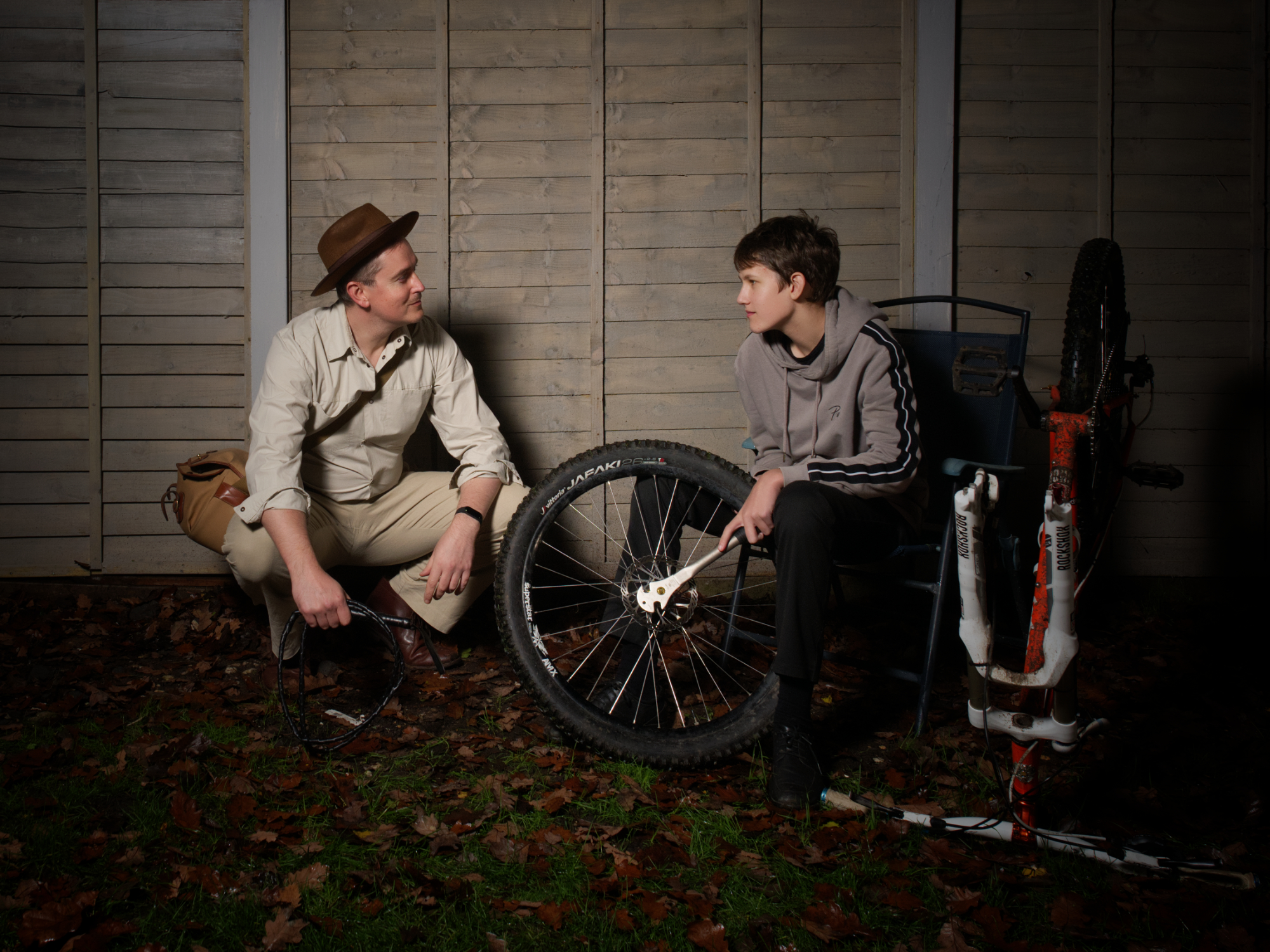Nail, hammer, ping.
Boys and their use of string to create physical routes back to roots. Or, as Carol Mavor expands in Reading Boyishly:
“I have seen my own boys do it: looping string inside and around a bureau drawer, up and over a bunk bed, down and through the axle of a toy truck, up and over and around the doorknob, through a box of toys and back on over to yet another handle on a bureau drawer. To open the bedroom door is to feel the tension of the domestic, the maternal tied up.”
Carol Mavor, Reading Boyishly
My ‘string’ – like that of Jacques Henri Lartigue – is photography. And the current segment of my ongoing project – Tree and Meadow – appeared to have a simple rationale – to examine the differences in self identities between me and my son.
His: organic and evolutionary, stretching outwards, like a tree. Mine: disrupted, scattered, like a meadow.
Though the creation of ‘the game’ of drawing lots, that juxtaposed a series of places/scenarios of domesticity (selected by my children and myself) with characters that most influenced me as a child (and adult), I hoped to explore his ‘tree-ness’ and my ‘meadow-ness’ visually.
But on turning the final page of Mavor’s book – a tome of swallows, early flight, fairies and, yes, string – I realise my work this module might be interpreted very differently.
They said that the boy had become obsessed with everything to do with string, and in fact whenever they went into a room they were liable to find that he had joined together chairs and tables; and they might find a cushion, for instance, with a string joining it to the fireplace.
D.W Winnicott: Playing and reality
Are the images taken so far not also a length of visual string that draws me back to ‘mother’? I think partly the answer is a yes. My exuberance for adopting, and partial absorption (playing with?) of, the characters I encountered that…well, I’m not sure quite what – inspired? No, not inspired. I think they made me feel safe. They provided a temporary salve to a very wounded boy, they offered a counter-weight to my story, they helped make a little sense in a world that did not quite make sense.
More, I wonder whether the characters – from Indiana Jones, to Sonny Crockett of Miami Vice to Mozart – were in fact delayed “transitional objects” of the type D.W Winnicott describes.
And if this is correct, the origin stories of my characters’ assumption becomes suddenly far more interesting to me, because they would be transitional objects not provided by ‘mother’, but taken and played with by ‘baby’.
Moreover, there is also an anorectic element at work here, as described by Mavor. In assuming elements of fantasy selves, the young Laurence is restricting his own ‘self’. And then there’s Marcel Proust whose novel In Search of Lost Time, is constructed “like a cathedral”, constructed from a collection of delights and curiosities. It leaves me wondering: Am I a meadow or a cathedral?
Mary Trent, in her review of Mavor’s book, finds one of its “chief strengths” to be “her celebration of such productive possibilities for the (often pathologized) mother-son bond”. I’m wondering what possibilities lay in my exploration of the mother-son non-bond.

And I’m thinking about my wonderful son Tom, because of course there is more than one piece of Winnicotian string in play in my work.
There is, crucially, the string that stretches father-to-son between he and I, and between father-to-daughter, to the key chooser of the scenarios created and photographer-in-chief for this project, my wonderful daughter Emma, and the web between us, that stretches out beyond the frame, and beyond the game itself, to their mother, my wife, Sarah, who perhaps sits, like Janine Antoni’s Inhabit, around it all, like a ‘mother spider’ upon the web.
References:
Mavor, C. (2007). Reading Boyishly : Roland Barthes, J.M. Barrie, Jacques Henri Lartigue, Marcel Proust, and D.W. Winnicott. Durham, N.J.: Duke University Press.
Winnicott, D.W. (2012). Playing and Reality. Hoboken: Taylor And Francis.
Trent, Mary. “Embracing the Mother as Muse.” Discourse, vol. 32, no. 2, 2010, pp. 264–267. JSTOR, www.jstor.org/stable/41389847. Accessed 15 Nov. 2020.
Janine Antoni: http://www.janineantoni.net





One thought on “ Carol Mavor, Bits of String and My Project ”